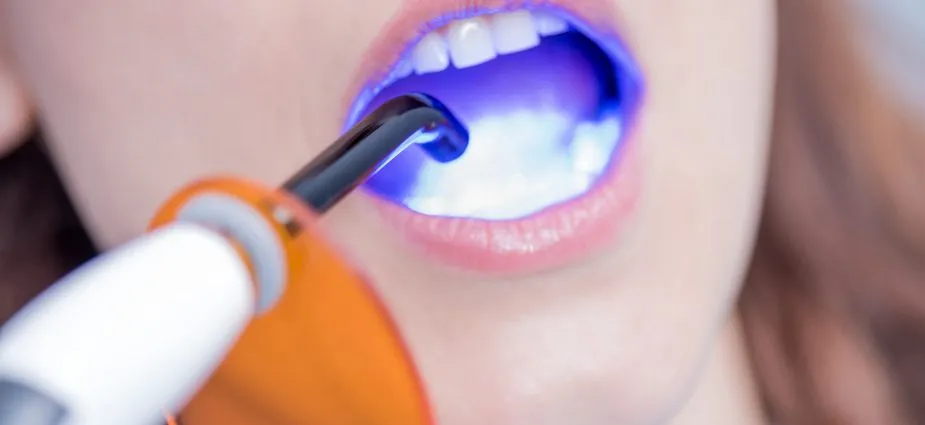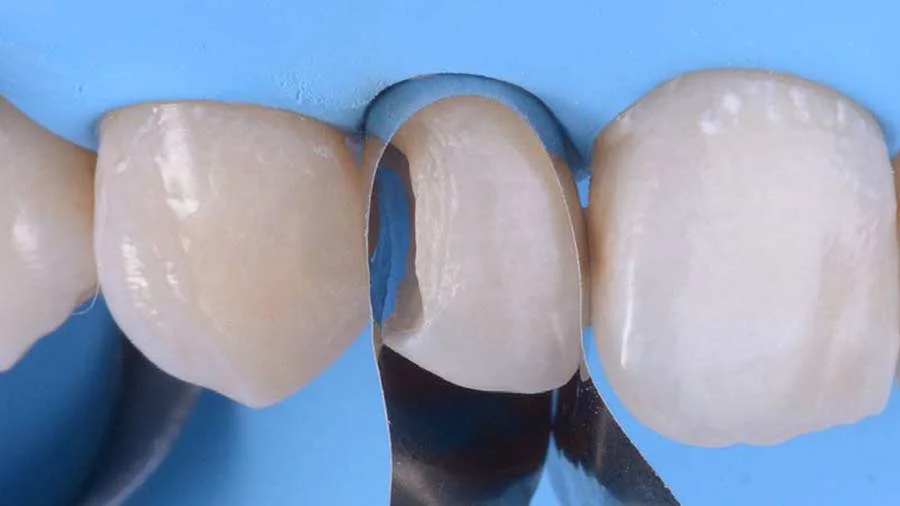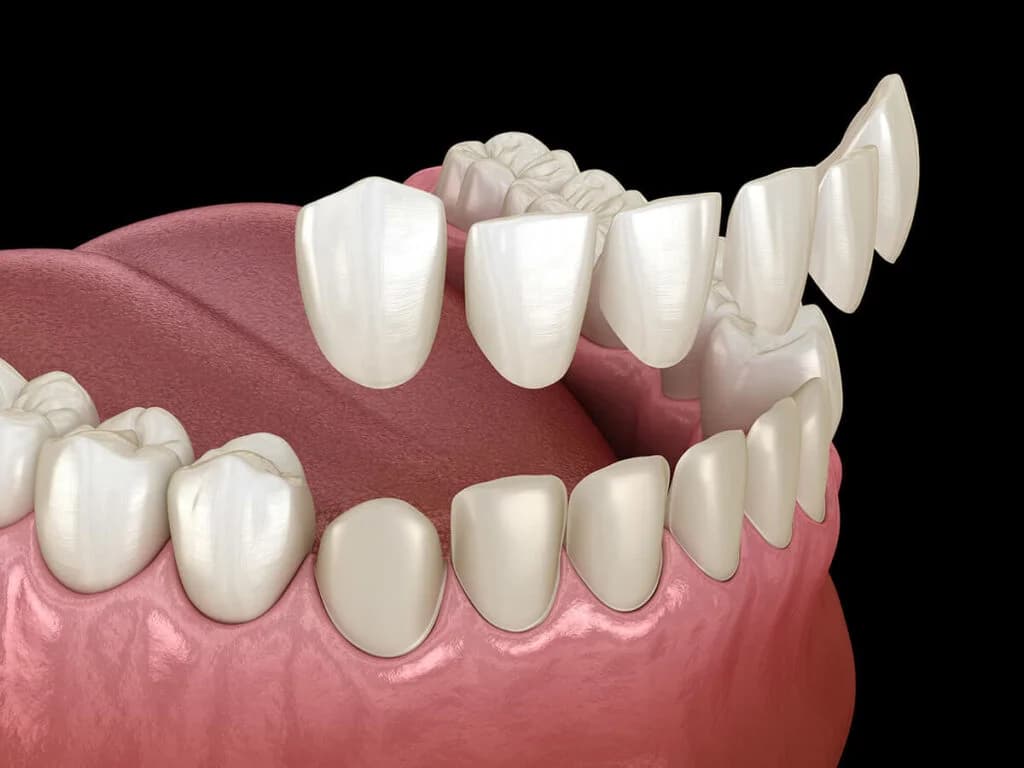Dental veneers are used to improve your smile by covering up tooth imperfections. Composite resin and porcelain are the most commonly used materials in the veneer fabrication process. Dental veneers can help with misshapen or crooked teeth, teeth that need to be whiter or are discolored, stained, or chipped.
What are dental veneers?
Depending on your specific needs, different types of custom-made shells fit over the front surfaces of your teeth. Dental veneers are used to conceal cracked, chipped, or stained teeth. Veneers are one of the most common cosmetic dentistry treatments. Technicians use high-quality dental materials, like tooth-colored composite or porcelain, to create them. You should keep in mind that your teeth need to be free of extensive cavities or gum disease if you want to get veneers.
Are there different types of veneers?
Yes. There are a few different types of veneers, including composite veneers, porcelain veneers, no-prep veneers, and removable veneers. We’ll be comparing the composite veneer and porcelain veneers in this article:
Composite Veneers
Composite veneers, or composite resin veneers, are crafted from translucent tooth-colored, dental-grade resin. Due to the ability to sculpt them, they are a good option for repairing cracks and chips in the tooth. Composite veneers are ideal for fixing small chips or cracks in the teeth, as you do not need to cover the entire tooth with resin. Like their porcelain alternative, composite veneers are a permanent restoration. There are two types of composite veneers:
Direct composite veneers: In this less-invasive approach the resin is applied directly to the tooth in a single appointment. The whole process is quick and easy.
Indirect composite veneers: In this process, like the porcelain veneers, the resin shell is formed inside a lab or dental office using composite material, and the tooth is prepped just as it would be for a porcelain veneer.
Composite veneers are most effective when used in situations in which smaller changes are needed such as a chipped or discolored natural teeth or minor misalignment of teeth. Composite cannot fill in large spaces so many dental professionals will recommend not to use composite veneers when you have big spaces between the teeth, very short teeth you'd like to lengthen, or have broken a large part of the edge of a tooth off. Composite veneers offer a life-like, beautiful appearance that can last for a reasonable amount of 5-10 years.

Advantages of composite veneers
Composite veneers can be accomplished in a single visit, unlike porcelain veneers which take at least 2 weeks to prepare.
Composite veneers require less tooth preparation.
Composite veneers are more affordable; the cost is usually about half that of porcelain veneers.
Disadvantages of composite veneers
Less durability than porcelain veneers, and more likely to chip.
Not suitable for those who smoke or drink coffee or red wine due to them staining more easily.

Porcelain Veneers
Porcelain veneers are thin shells (covering the entire surface of the teeth) made from a porcelain laminate material. These are the longest-lasting and most durable types of veneers. As these custom-made shells are made to fit your dental anatomy, some enamel from your natural teeth needs to be removed before they can be placed on. This roughens your teeth' surfaces and helps your new veneers stay in place.
These veneers are custom-made for your teeth. For these, the dentist will make an impression on your teeth, which means the veneers will be made from a mold in a lab. Sometimes the process may take up to two weeks or more. Porcelain veneers are very strong and durable, they rarely chip and are color-stable. They can last 15-20 years if you take good care of them.

Advantages of porcelain veneers
Due to its translucent, light-reflective quality, it resembles tooth enamel.
Porcelain veneers is a glaze placed on the outside, making it extremely resistant to staining.
Porcelain veneers are very durable and they rarely chip.
Disadvantages of porcelain veneers
Preparations take at least two weeks, and you’ll need another visit for them to be placed.
Porcelain veneers are more expensive than composite veneers as their placement requires more time, expertise, and resources.
If porcelain veneers break, they cannot be fixed and must be replaced.

Conclusion
In conclusion, the choice between composite veneers and porcelain veneers depends on your individual needs and circumstances. Composite veneers are less expensive, require less tooth preparation, and can be repaired if damaged. They are a good choice for minor cosmetic changes. On the other hand, porcelain veneers are more durable, resistant to staining, and mimic the light-reflecting properties of natural teeth, making them an excellent choice for more significant cosmetic changes. However, they are more expensive and require more tooth preparation. It’s essential to discuss these factors with your dentist to make an informed decision that best suits your needs and budget.